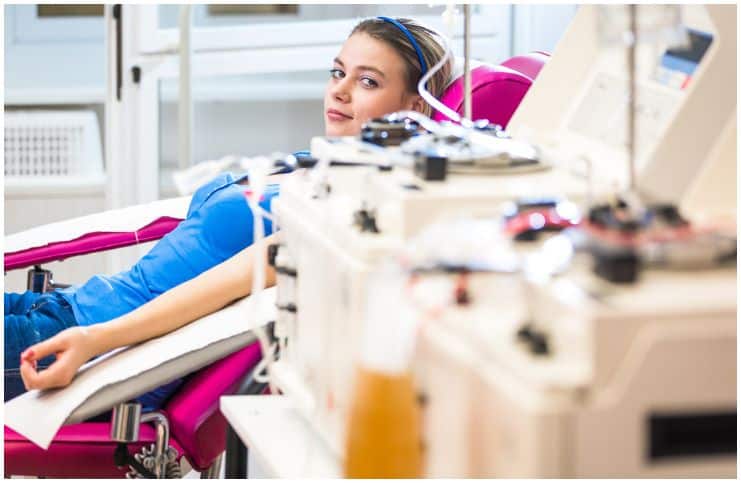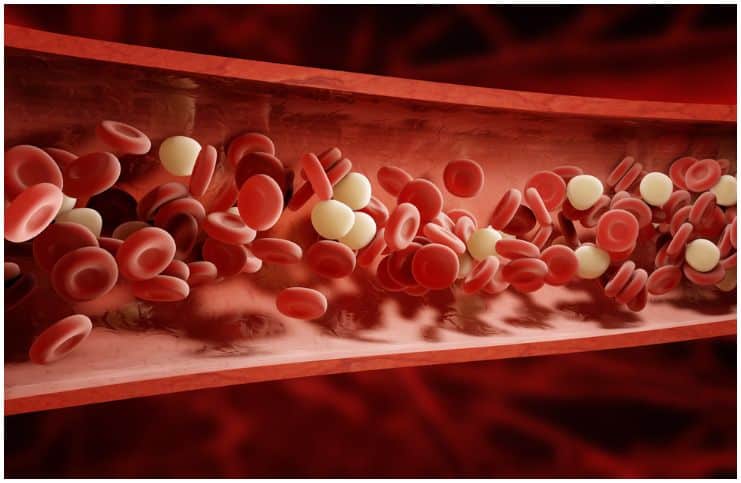Long-term side effects of donating plasma regularly:
Plasma is one of the vital blood components required for modern medical practice.
Donating plasma is an automated process where instead of donating whole blood, the donor gives only a specific part, usually plasma or platelets.
An apheresis machine is used to collect it, and both arms are used during a donation.
This is because blood is extracted from one arm, then the plasma is extracted using a machine, and the uncollected parts of the blood, including white blood cells and red blood cells, are returned to the donor through the other arm.
Commonly, it takes between 1 and 3 hours to donate, and during a plasma donation, all of the supplies which come in contact with the blood are sterile and used only once.
Requirements
- Have good health;
- Weigh at least 110 lbs;
- Be 18 or older.
Presently, the regulations allow people in the United States to donate twice a week, however, not on consecutive days.
It is more than any other place in the world, but people do it, especially for remuneration.
What Are The Side Effects Of Donating Plasma Too Often?
Dehydration
Hydration helps the human body maintain proper circulation, pumps up the veins to make the blood flow easier, and prevents light-headedness.
To avoid dehydration, it is recommended to consume at least 16 ounces of water (or liquids) before the procedure.
Low Blood Protein Hemoglobin In The Blood
Hemoglobin is responsible for transporting oxygen to the tissues throughout your body and is found in the red blood cells.
Low hemoglobin occurs in about 10 percent of donations, and it is usually a consequence of iron deficiency anemia.
Symptoms of iron deficiency anemia may include:
- headaches;
- lack of skin color;
- feeling dizzy;
- irritability;
- wanting to eat nonfood things such as ice or dirt;
- lack of energy;
- sore or swollen tongue;
- increased heart rate.
Tip – vitamin C helps the body absorb more non-iron (from plants). Hence, to get the most of this essential mineral from the food you eat, combine foods rich in vitamin C with foods high in iron.
READ MORE: Do Probiotics Cause Smelly Gas And Bloating?
Hypocalcemia
This procedure may deplete the calcium levels in the body since, occasionally, plasma donation centers may use an anticoagulant when they apply this procedure. This may result in a loss of calcium in the blood.
Interestingly, when the calcium ions in your blood become too low, you may experience tingling in your fingers, start to feel cold, and feel nauseous.
Hypocalcemia can be prevented by consuming foods high in calcium in the days prior to donation. Fact – sesame seeds have 9 percent of the RDI for calcium in 1 tablespoon.
Nevertheless, be aware that foods high in calcium, like – dairy products, can also be high in trans fat, cholesterol, and saturated fat.
Hypomagnesemia
Magnesium is an essential mineral that helps maintain normal nerve and muscle function, supports a healthy immune system, regulates heart rhythm, and keeps bones strong.
Magnesium, just like calcium, is a divalent cation and, as a result, is also bound by citrate.
Infusion of citrate during this procedure has been found to lower ionized magnesium by up to 40 percent. Besides, the risk can be higher if people donate more often.
Minor Bruising
The formation of marks is one of the long-term effects that may occur after this procedure.
Nevertheless, in most cases, marks do not appear and are not usually serious. Rarely a bruise may become infected, and the donor may need treatment with antibiotics.
Arterial Puncture
Arterial puncture is when the needle is inserted into an artery rather than a vein.
This happens when the needle is inserted into an artery instead of a vein. However, when this happens, the medical staff is trained to deal with this complication.
Lightheadedness
Lightheadedness is feeling as if you might faint.
Some people may feel lightheaded during or right after this medical procedure.
This commonly happens when the donor does not eat enough just before donating.
Other Adverse Effects
Overtime possible complications after this procedure may include:
- low endorphin and serotonin levels in the blood;
- worsening mental disorders and depression;
- increasing anxiety levels.
READ MORE: Rum vs Vodka
Are There Any Benefits?
Helps Save Many People
Plasma is used to create various life-saving blood products which contribute to:
- control some autoimmune disorders where the sufferer’s immune system is attacking his tissues;
- therapies utilized in the treatment of rare conditions, such as – von Willebrand disease and hemophilia;
- enhance the immune system of patients who have low levels of antibodies.
Compensation
Donors usually get paid for donating plasma and for the time they devote to improving the quality of life of other people.
Lowers LDL Cholesterol
The donation process may lower LDL cholesterol levels in donors (especially if their LDL or total cholesterol levels are high), according to a 2012 study conducted by Grifols that involved 663 adults and 9,153 plasma samples.
Tip To Donate Plasma Safely
Plasma is made up mainly of protein and water; hence, the process of donating does deprive you of those crucial nutrients.
To prevent any possible adverse effects, make sure you consume plenty of fluids leading up to the donation and foods high in protein, including – nuts, seeds, and legumes.
For example, chickpeas are an excellent source of protein, and a 1-cup serving of these delicious legumes contains about 18 grams of protein.
Moreover, you can have other legumes (such as red kidney beans, lentils, navy beans, or green peas), seeds – chia seeds and flax seeds (the best source of omega 3), and nuts – almonds, walnuts, pecans, or hazelnuts.
READ MORE: Hydrogen Peroxide vs Rubbing Alcohol
Alcohol
It is advised to refrain from consuming alcohol and smoking.
To donate plasma, you need to weigh at least 110 pounds, be between 18 and 64 years old, and be in good health.
More importantly, donors must have had no dental work or antibiotics three days before donation, as well as no tattoos or body piercings in the last year.
READ THIS NEXT: Measles vs Chicken Pox
References https://www.ncbi.nlm.nih.gov/pubmed/8053039 https://www.ncbi.nlm.nih.gov/pubmed/11724983 http://www.prnewswire.com/news-releases/grifols-study-suggests




Legumes… or ummm meat
Just said the m – word
Do not say the M word again gentleman. We are all about plant base now. I’ve been donating twice a week for about 3 months now. I feel very weak after and sleepy. Felt light headed once, leg cramps once. Getting tracks on my arms. I’ve made about $1450
I eat M and never feel that way.
Canadians donate for free to help the people who need the products made from plasma. Not all about the money.
You guys virtue signal for free too, eh?
Though economic times being what they are, I certainly cannot fault anyone for turning to plasma donation for extra cash. A few extra hundred dollars a month can make the difference between making a mortgage payment or buying groceries.
Though Canadian Blood Services doesn’t pay for plasma donation, you can now get paid for donating plasma in Canada through Canadian Plasma Resources.
That’s nice. I don’t donate for the money, but it’s a bonus for me.
we donate for free in New Zealand. I’m giving my plasma as I feel the need to give back after having life threatening injuries in my younger years. I donate once a month. I’m 66.
What if you have a heart condition